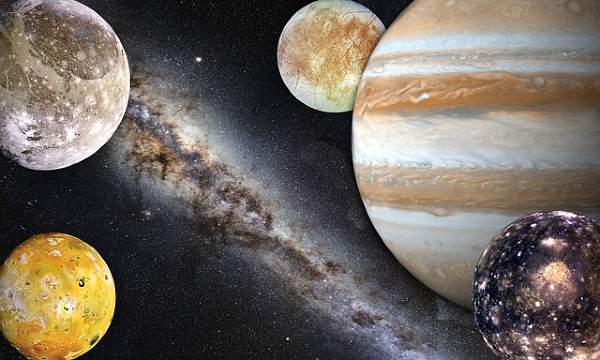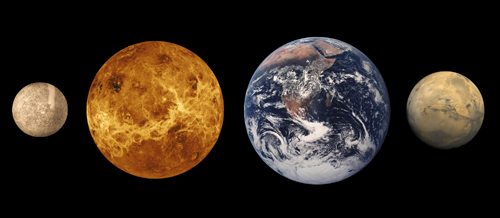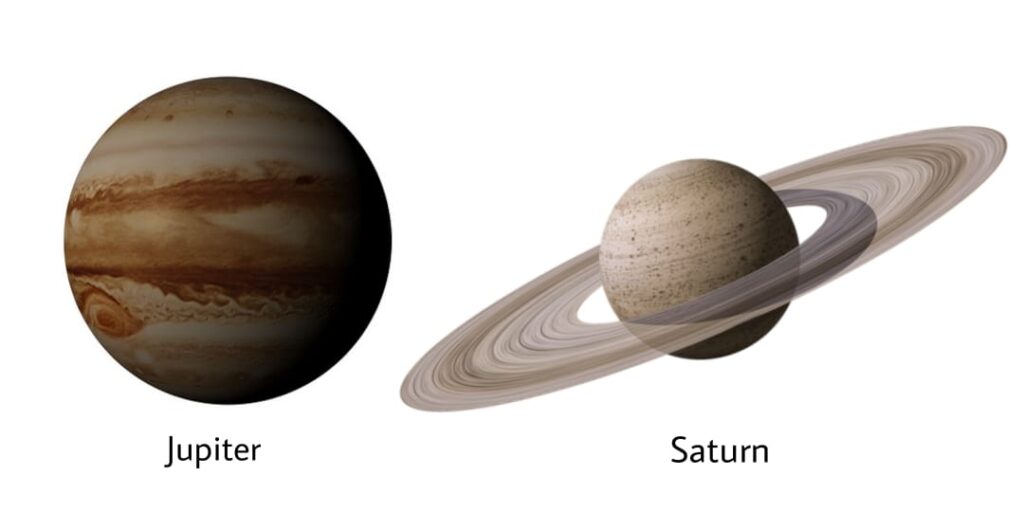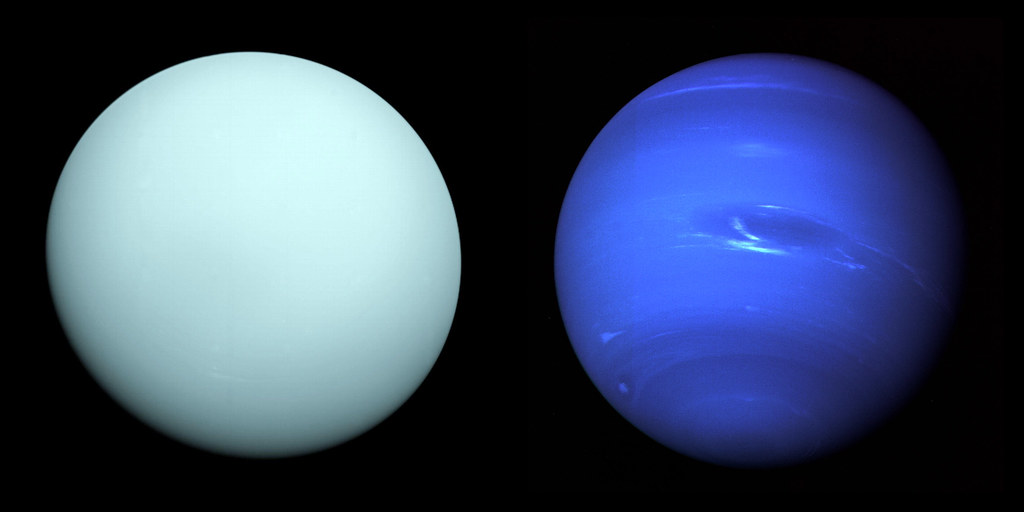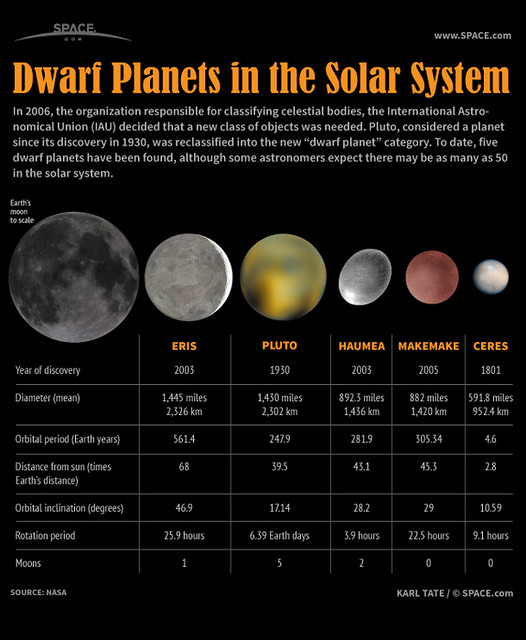Our Solar System has eight major planets and many minor planets. Additionally, there are thousands of planets in outer space. The astronomers must classify them and describe their features. The classification of planets helps us to understand them better. So, in this article, we are going to know about What are the different classifications of planets and why it is important.
What is a planet and why is it important to classify planets?
A planet is a celestial body that revolves around the Sun in an orbit, according to the International Astronomical Union. Also, It should have a mass enough to have a round shape and has ‘cleared the neighbourhood’ around its orbit.
Currently, eight planets meet the definition of a planet suggested by the IAU. These are – Mercury, Venus, Earth, Mars, Jupiter, Saturn, Uranus and Neptune. There was a 9th planet known as Pluto but later it was declared a dwarf planet due to its small size and offbeat orbit. Still, the exclusion of Pluto in the list of planets remains controversial.
Classification of planets is super important for astronomy. By classifying planets, astronomers can study their features and properties. It also helps in the study of the upcoming planets. While classification is a tough task, it helps a great deal in understanding everything about the planets.
How is the classification of planets done?
For all the planets in our solar system, there are four main categories to classify them. These are:
1. Terrestrial Planets
The planets of our solar system having a solid rocky surface are the Terrestrial planets. Planets like Mercury, Venus, Earth and Mars fall under this category as they have a firm rocky surface. They don’t have rings around them. Apart from Mercury all have significant atmospheres. Let us know a bit more about the terrestrial planets:
- Mercury – the closes planet to the Sun, Mercury is the second smallest planet. Due to its proximity to the sun, it has high temperatures of 840 degree Fahrenheit during the day. These extreme temperatures don’t allow the planet to have any atmosphere. Thus, it has craters all over its surface from the attack of meteors and asteroid.
- Venus – the second planet from Sun, Venus is a toxic planet with an atmosphere of carbon dioxide. It is the hottest planet in our solar system and is the day and night star. Several countries now have explored Venus and several missions are on the way.
- Earth – The only planet in our solar system to have life and all the necessary conditions for life. A year on Earth is 365 days 6 hours long and days are 24 hours long. Beliefs say that Earth is around four thousand million years old.
- Mars – the fourth planet from Sun, Mars is the red planet due to its reddish colour. This is due to the iron content dissolved in its regolith. Its atmosphere consists of carbon dioxide which makes it unsuitable for life. Here’s a link to what we know about Mars from our previous explorations.
2. Gas Giants
Another classification of planets is the Gas Giants. They are large planets composed of gases like helium and hydrogen and have a small rocky core. Four exterior planets fall under this category – Jupiter, Saturn, Uranus and Neptune. Out of them, Uranus and Neptune are also called ice giants as they are extremely cold in nature. Giants supposedly formed like terrestrial planets. But, the huge cores allowed them to gather hydrogen and helium. This was particularly seen in Jupiter and Saturn. Uranus and Neptune due to their small sizes and larger orbits couldn’t gather much helium and hydrogen. Let us know more about these Gas Giants:
- Jupiter – is the largest planet in our solar system and is fifth from the sun. Its radius is about 50 times that of Earth. It consists primarily of hydrogen and helium. The surface is a dense core of rocks and ice. Jupiter, due to its huge size is visible sometimes by the naked eyes as well.
- Saturn – Characterized by its huge rings, it is the sixth planet from the Sun. Like Jupiter, it is also made of hydrogen and helium and has 53 confirmed moons, with several to be confirmed.
3. Ice Giants
These are the planets that have a solid iced surface. They are mainly composed of hydrogen, helium, oxygen, nitrogen and sulphur.
- Uranus – having a radius four times that of Earth, it is the only planet tilted on its side. It rotates opposite every planet except Venus. It has 27 moons and the atmosphere of Uranus consists of helium, hydrogen and methane.
- Neptune – the farthest planet of our solar system. It is quite like Uranus in its features and properties. It has a radius of about four times that of Earth and has 13 confirmed moons. It is the windiest planet of our solar system and takes 165 Earth years to complete one revolution around the Sun.
4. Dwarf Planets
These are the planets that are much smaller in size than the major planets but have the properties to like planets. According to the definition, a dwarf planet is a planet that orbits around the Sun, has sufficient mass to overcome the rigid forces, has not cleared the neighbourhood around the orbit and is not a satellite. According to this classification of planets, there are 4 dwarf planets, all in the Kuiper Belt.
- Pluto – once, the 9th planet of our solar system, it is beyond Neptune in the Kuiper Belt. It is smaller in size than Earth’s moon and can have temperatures around -233 degree Celsius.
- Haumea – has an elongated shape and is nearly the size of Pluto. It takes around 285 Earth years to complete one revolution around the Sun. It has a rocky surface with a covering of snow, making it a bright dwarf planet.
- Makemake – smaller than Pluto in size, its discovery took place recently in 2005. Its composition is of frozen nitrogen, methane and ethane and takes nearly 310 years to revolve around the Sun.
- Eris – the fourth dwarf planet is Eris which has an orbital path that goes outside of our solar system. It has a surface completely covered with ice.
How is the classification of planets outside our solar system done?
This was the classification of planets within our solar system. What about the planets that are outside our solar system. They are the Exoplanets. They are of different sizes, masses, compositions and characteristics.
Classification into 4 major categories:
- Gas Giants – they are about the size of Saturn and Jupiter or can be much larger. They consist of gases like hydrogen and helium. For example, the Hot Jupiters are gas giants that are close to their stars and thus have thousands of degrees of temperature.
- Neptunian Planets – Like the size of Neptune and Uranus, these exoplanets have rocky cores. They are bound by helium and hydrogen atmospheres.
- Terrestrial Planets – these exoplanets are the size of Earth and are formed of rocks, water or carbon. With investigation, it can be found whether they can support life or not.
- Super-Earths – these planets are larger than Earth but smaller than Neptune. They may or may not have atmospheres and are typically terrestrial planets.
Till now, we have classified exoplanets in these categories. The classification of planets is by keeping in mind various parameters. In future, there are more exoplanets bound to be found and new classifications will come up.
Conclusion
Planets are the celestial bodies that revolved around the Sun in fixed orbits. Our solar system has eight major planets and four dwarf planets. The classification of planets is done into four categories – terrestrial, gas giants, ice giants and dwarf planets. The planets outside our solar system are exoplanets. They too have classifications into four categories. With further investigations, new planets will be found. Simultaneously, astronomers will come up with new classifications of planets.
———————————
Recent posts:
